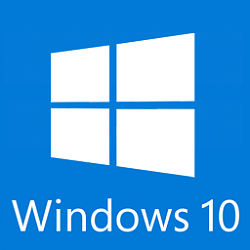KB4535680 Security update for Secure Boot DBX - Jan. 12 Win Update
- Windows Server 2012 x64-bit
- Windows Server 2012 R2 x64-bit
- Windows 8.1 x64-bit
- Windows Server 2016 x64-bit
- Windows Server 2019 x64-bit
- Windows 10, version 1607 x64-bit
- Windows 10, version 1803 x64-bit
- Windows 10, version 1809 x64-bit
- Windows 10, version 1909 x64-bit
- Windows devices that has Unified Extensible Firmware Interface (UEFI) based firmware can run with Secure Boot enabled. The Secure Boot Forbidden Signature Database (DBX) prevents UEFI modules from loading. This update adds modules to the DBX.
A security feature bypass vulnerability exists in secure boot. An attacker who successfully exploited the vulnerability might bypass secure boot and load untrusted software.
This security update addresses the vulnerability by adding the signatures of the known vulnerable UEFI modules to the DBX. - On a device that does not have Credential Gard enabled, run following command from an Administrator command prompt to suspend BitLocker for 1 reboot cycle:
Manage-bde –Protectors –Disable C: -RebootCount 1
Then, restart the device to resume the BitLocker protection.
Note Do not enable BitLocker protection without additionally restarting the device as it would result in BitLocker recovery. - On a device that has Credential Guard enabled, there may be multiple restarts during the update that require BitLocker to be suspended. Run the following command from an Administrator command prompt to suspend BitLocker for 3 restart cycles.Manage-bde –Protectors –Disable C: -RebootCount 3This update is expected to restart the system two times. Restart the device once again to resume the BitLocker protection.
Note Do not enable BitLocker protection without additionally restarting as it would result in BitLocker recovery.
Security update for Secure Boot DBX: January 12, 2021
Applies to
This security update applies only to the following Windows versions:
Summary
This security update makes improvements to Secure Boot DBX for the supported Windows versions listed in the "Applies to" section. Key changes include the following:
To learn more about this security vulnerability, see CVE-2020-0689 | Microsoft Secure Boot Security Feature Bypass Vulnerability.
Known issues
Issue Workaround Some original equipment manufacturer (OEM) firmware might not allow for the installation of this update. To resolve this issue, contact your firmware OEM. If BitLocker Group Policy Configure TPM platform validation profile for native UEFI firmware configurations is enabled and PCR7 is selected by policy, it may result in the BitLocker recovery key being required on some devices where PCR7 binding is not possible.
To view the PCR7 binding status, run the Microsoft System Information (Msinfo32.exe) tool with administrative permissions.
Important Changing from the default platform validation profile affects the security and manageability of your device. BitLocker's sensitivity to platform modifications (malicious or authorized) is increased or decreased, depending on inclusion or exclusion (respectively) of the PCRs. Specifically, setting this policy with PCR7 omitted, will override the Allow Secure Boot for integrity validation Group Policy. This prevents BitLocker from using Secure Boot for platform or Boot Configuration Data (BCD) integrity validation. Setting this policy may result in BitLocker recovery when the firmware is updated. If you set this policy to include PCR0, you must suspend BitLocker before you apply firmware updates.
We recommend not to configure this policy, but to let Windows select the PCR profile for the best combination of security and usability based on the available hardware on each device.To workaround this issue, do one of the following based on credential guard configuration before you deploy this update:
How to get this update
Method 1: Windows Update
This update is available through Windows Update. It will be downloaded and installed automatically.
Method 2: Microsoft Update Catalog
To get the stand-alone package for this update, go to the Microsoft Update Catalog website.
Method 3: Windows Server Update Services
This update is also available through Windows Server Update Services (WSUS).
Prerequisites
Make sure you have the lastest servicing stack update (SSU) installed. For information about the latest SSU for your operating system, see ADV990001 | Latest Servicing Stack Updates.
Restart information
Your device does not have to restart when you apply this update. If you have Windows Defender Credential Guard (Virtual Secure Mode) enabled, your device will restart two times.
Update replacement information
This update does not replace any previously released update.
Source: https://support.microsoft.com/en-us/...ecure-boot-dbx
Related Discussions


